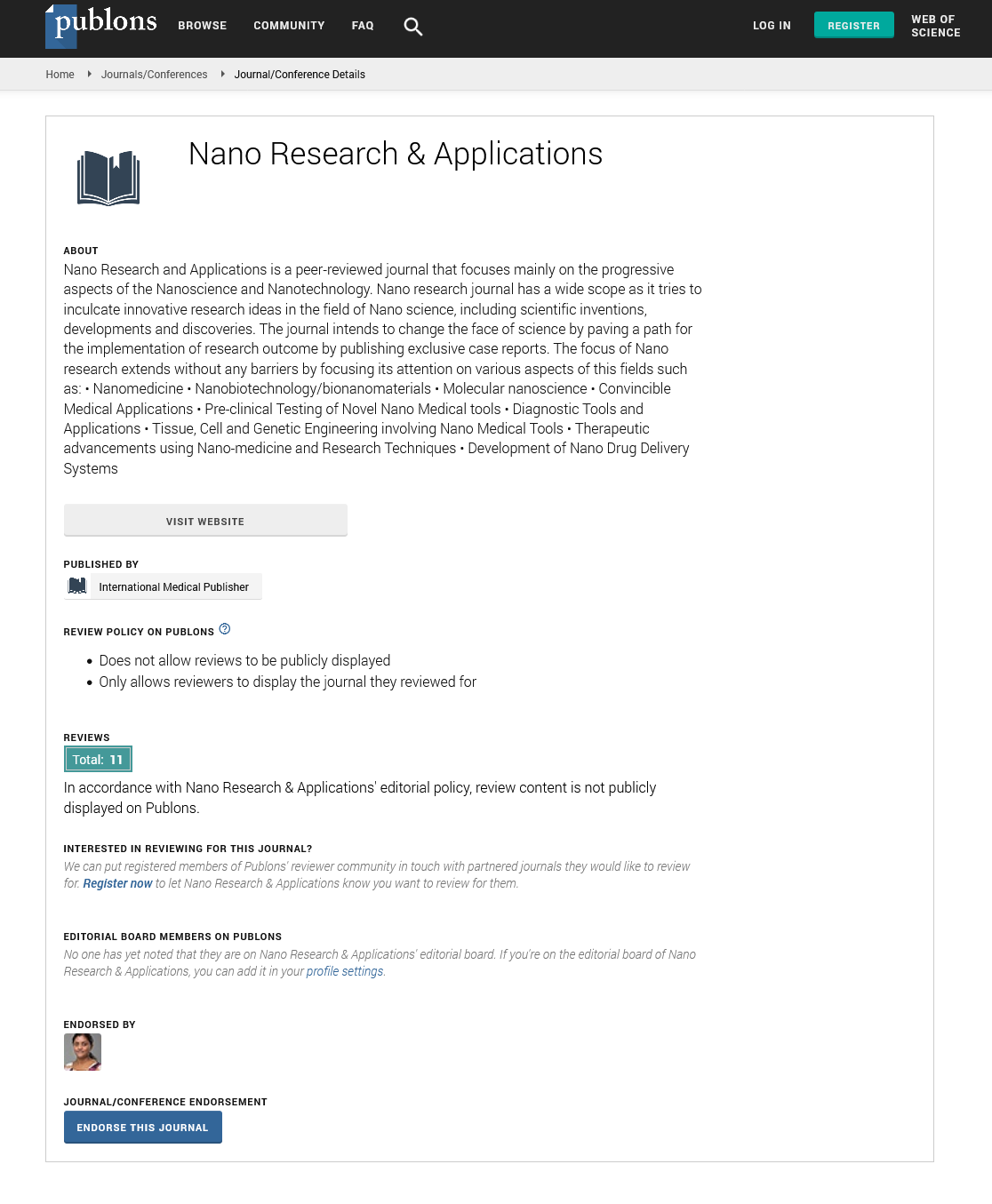ISSN : 2471-9838
Nano Research & Applications
Does the capacity removal of As(V) improve with the incorporation of a second metal (Cu) on Fe nanoparticles?
World Congress on Materials Science & Engineering
August 23-25, 2018 Amsterdam, Netherlands
Pamela Sepulveda, C Flores, M A Rubio, A Garcia Garcia and N Arancibia-Miranda
Universidad de Santiago de Chile, Chile Laboratorio de sintesis y modificacion de nanoestructuras y materiales bidimensionales, Mexico
Posters & Accepted Abstracts: Nano Res Appl
DOI: 10.21767/2471-9838-C4-018
Abstract
The use of Fe0 nanoparticles (Fe NPs) has presented a great interest as adsorbent material. It has been extensively used for the decontamination of aqueous matrices. However, this material has some limitations when used in aqueous matrices and porous media, such as soil. To resolve these problems, the use of bimetallic nanoparticles (BNPs), specifically, FeCu BNPs had been reported, because this material has a higher reactivity, colloidal stability and removal rate compared with Fe NPs. The aim of this work was to synthesize and characterize Fe NPs and FeCu BNPs (different mass ratio of Fe-Cu,), evaluating the incorporation of Cu on Fe NPs in the removal of As(V) present in aqueous matrices. The synthesis of nanomaterials was performed following the experimental procedure proposed by Wang & Zhang (1997). The change to the proposed synthesis was performed considering the simultaneous reduction of both metals, using NaBH4 as a reducing agent. SEM images showed the formation of characteristic agglomerate of this magnetic material (Fe NPs). For FeCu BNPs, structure mix (pseudo spherical, amorphous and sheet) was observed. Besides, by XRD, peaks of Fe0 for both materials and Cu0 and oxide in FeCu BNPs, were identified. The sorption isotherm were carried out in batch system, working with 50 mg of nanomaterial and a solution of 200 mg/L As(V) (As2O5), 0.01 M NaCl (background electrolyte), pH 7, and stirred time of 5 hours. The Freundlich Model, which is characteristic of oxyanions that form multiple layers during the removal process, showed the best mathematical fit of the experimental data. FeCu BNPs showed better removal capacity than Fe NPs. In base on this study, the incorporation of Cu on Fe NPs, improves the removal capacity and therefore, this material can be applied as an absorbent nanomaterial for As(V) abatement.
Biography
E-mail:
pamela.sepulvedaor@usach.cl
Google Scholar citation report
Citations : 387
Nano Research & Applications received 387 citations as per Google Scholar report
Nano Research & Applications peer review process verified at publons
Abstracted/Indexed in
- Google Scholar
- China National Knowledge Infrastructure (CNKI)
- Directory of Research Journal Indexing (DRJI)
- WorldCat
- Publons
- Secret Search Engine Labs
- Euro Pub
Open Access Journals
- Aquaculture & Veterinary Science
- Chemistry & Chemical Sciences
- Clinical Sciences
- Engineering
- General Science
- Genetics & Molecular Biology
- Health Care & Nursing
- Immunology & Microbiology
- Materials Science
- Mathematics & Physics
- Medical Sciences
- Neurology & Psychiatry
- Oncology & Cancer Science
- Pharmaceutical Sciences
